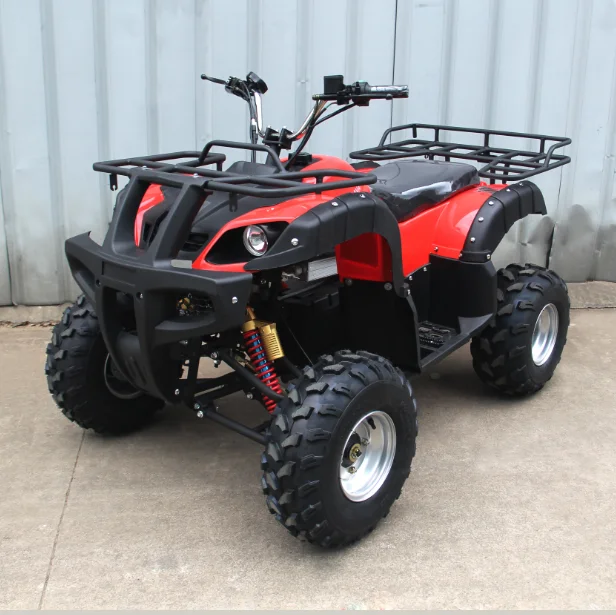Vehicles sold on this site are legal in most states. Please check with your local DMV for state specific requirements such as registration, age requirements and helmet laws prior to any purchase. California residents require C.A.R.B. approval (California Air Resolution Board) to be legal in the state of California.
How much assembly is required?
Most vehicles are 75% - 90% assembled. We recommend a certified technician assist you with your assembly. However, assemblies are generally quick and easy and can be performed by the average consumer with average mechanical aptitude. Units are run and tested at the factory before being disassembled (made compact) and crated to make shipping feasible. Most units will require you to raise and bolt down the Handle bars, Fill and install Battery, Install Wheels/tires assemblies, Lower A-arm in place and bolt together front hub assemblies, Check and if necessary adjust drive chain tension, check and adjust wheel alignment, install racks if applicable and lastly check entire unit for bolts that may have come loose during shipping or were overlooked during assembly.
Every nut and bolt must be checked and verified for tightness before use. Units do come filled with oil (10w40) but require checking for proper level before starting. We do however highly recomend changing the oil before starting. Note: All tools necessary for assembly are included with unit including a battery charger were applicable. (Not all units come with charger)
Where can I obtain replacement parts if needed?
We stock parts for every make and model we sell. Most parts can be purchased directly from our website using either the Parts drop down menu or the search function. If you can't find the parts you are looking for, or are having trouble identifying your make and model call 732-991-2194 (we would be glad to help).
Do the headlights work?
Yes, all ATV’s, Scooters, and most Go-karts have working headlights, Brake lights, and parking lights. Most models even have a selector switch for high and low beams.
Note: Due to Government regulations most ATV body mounted headlights have been deleted or blacked out to deter nighttime riding.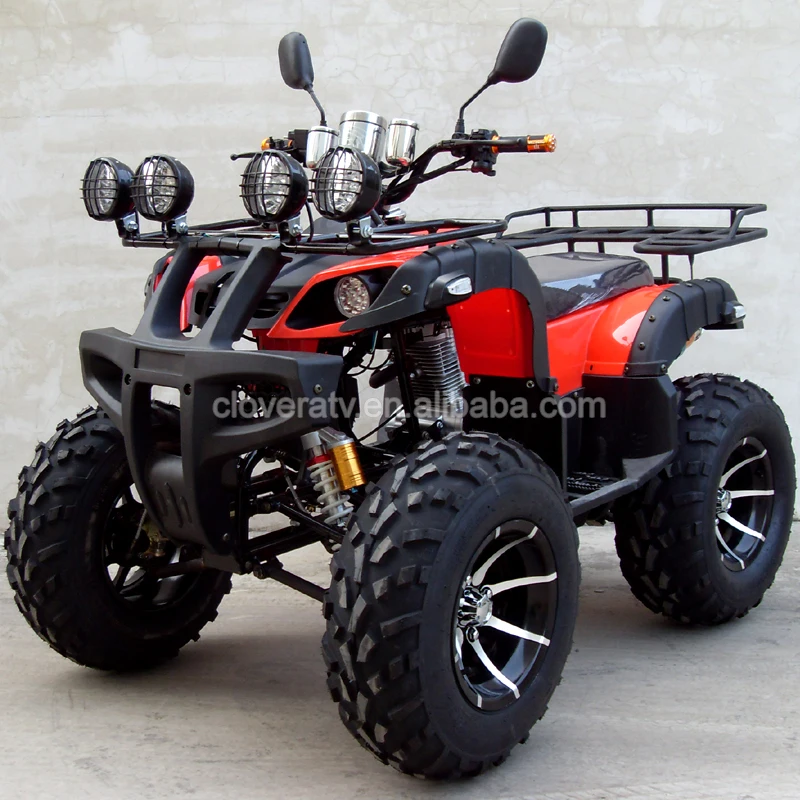 However working replacement headlight assemblies can be purchased separately and installed by the end user. (Handlebar mounted spot light are still supplied) Call for details
However working replacement headlight assemblies can be purchased separately and installed by the end user. (Handlebar mounted spot light are still supplied) Call for details
How fast do they go?
Depending on rider weight:
110cc: up to 32 mph (can be governed down to 7-10 mph)
125cc: up to 32 mph (can be governed down to 7-10 mph)
150cc: up to 40 mph
250cc: up to 45 mph
300cc: up to 50+ mph
How does the speed governor work?
A stop screw is located on the throttle that when adjusted limits the amount the throttle can be pressed. this is a throttle limiter not a speed limiter.
What type of oil do they use? When should I change it?
Contrary to rumors on the Net they are not filled with fish oil. Most units require and are filled with 15w40 break in oil from the factory. We at Familyfunpowersports highly recommend and use, non-detergent (Rotella T) 15w40 Diesel truck oil. This is the same oil used by many MX and ATV professional race teams in their bikes.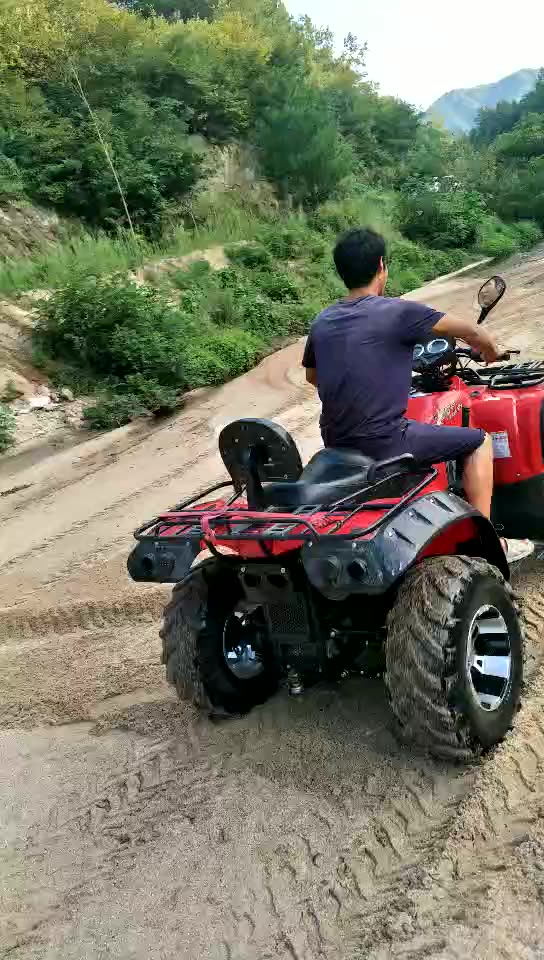 If not available any (15w40 four stroke) Motorcycle oil will work. (Note: for very cold climates and easier starting 5w40 Rotella synthetic oil can and should be used) Most units require about 900ML, Verify level with dip stick provided (DO NOT OVERFILL) Check with dip stick. In order to comply with warranty requirements the oil must be changed before initial start up. After the initial oil change it is recommended that the oil be changed again after 5 tanks of fuel and then every 20 hrs thereafter.
If not available any (15w40 four stroke) Motorcycle oil will work. (Note: for very cold climates and easier starting 5w40 Rotella synthetic oil can and should be used) Most units require about 900ML, Verify level with dip stick provided (DO NOT OVERFILL) Check with dip stick. In order to comply with warranty requirements the oil must be changed before initial start up. After the initial oil change it is recommended that the oil be changed again after 5 tanks of fuel and then every 20 hrs thereafter.
Do I have to mix gas and oil for fuel
NO, all our ATVs and Go Karts have 4-stroke motors, which means you will be using ONLY GAS just like your car. 87-93 octane is perfect for these machines.
Do I need to charge the battery every time I use it?
No, all vehicles we sell with the exception of some kick start dirt bikes have standard 12 volt batteries with built in charging system just like every other ATV or Motorcycle. You will need to fully charge the battery (before use) for 18 hours with the supplied charger (were applicable) or you can use a standard 12volt car battery charger if available. Note: Leaving the key on for extended periods of time can and will drain the battery. If storing for a long period of time (over 1 month) remove the positive battery cable.
Note: Leaving the key on for extended periods of time can and will drain the battery. If storing for a long period of time (over 1 month) remove the positive battery cable.
NOTE: We at familyfunpowersports highly recommend the use of a (battery tender) type Battery Maintainer during cold weather months. It is difficult for smaller powersports vehicle batteries to maintain a charge when the temperature drops below 40degs. They are available for under $60 and are well worth the money and your piece of mind.
________________________________________
PURCHASE FAQ
Could I get a discount if I order more than one vehicle at a time?
Our prices are the best on the net, but with orders of (3) or more we will give even bigger discounts, the more you order, more discounts you get. Please email us at [email protected] or call 732-991-2194 for a quote.
________________________________________
PAYMENT FAQ
What method of payment do you accept?
• Visa
• MasterCard
• Discover
• Postal Money order
• Cashier’s check
• Cash in person (Do not send cash)
Do you charge sales tax?
NJ Residents must pay 7% sales tax all other states are exempt.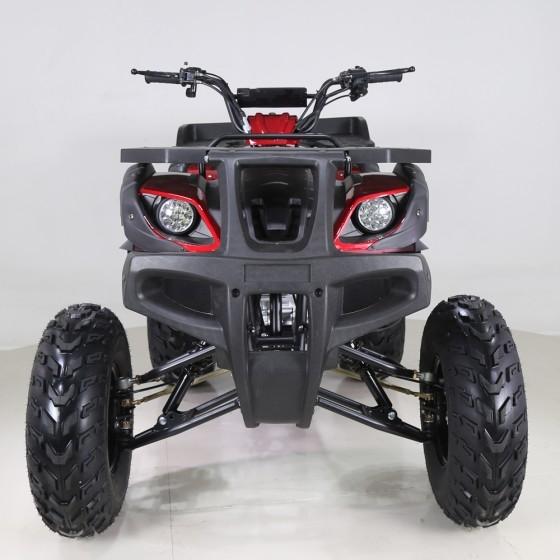
Is Familyfunpowersports.com website secure? What kind of security is used?
When you are placing an order on the Internet, security is a number one priority. All online transactions are sent through our secure server, and encrypted with 128-bit technology. Once the information is received through the Internet, trusted authorized employees will process your payment, and make sure that your information is handled with the highest level of security.
________________________________________
SHIPPING FAQ
If I place an order today, how long will delivery take?
All orders are processed and shipped within 2-4 business days from your date of purchase. However, we generally ship your order the same day if payment is received before 11:00 am Eastern Standard Time. Transit time takes approximately between 3 to 7 business days for delivery depending on your location. We do not ship on Saturdays, Sundays or Holidays. Any orders placed on Saturday or Sunday will be processed the next business day. During holiday seasons, process period may extend, but not limited, to 3-5 business days. Transit time during holiday seasons may extend, but not limited, to 5-12 business days.
During holiday seasons, process period may extend, but not limited, to 3-5 business days. Transit time during holiday seasons may extend, but not limited, to 5-12 business days.
All bike orders will be shipped by trucking company to your door directly. We don't charge additional fees for residential delivery and lift gate service (Free lift-gate service except for dirt bikes).
Do you ship to Alaska or Hawaii?
Sorry, not at this time.
Will I receive a confirmation once my order ships?
Yes, we will e-mail you the shipping company information along with your tracking number once your order ships so you can track your order online or by calling the trucking company directly. We require 2-4 business days to process your order before we forward you your tracking number. Please note that the "Standard Delivery Date" that shows on shipping company’s website is just an estimate; please call the shipping company to obtain accurate information on your shipment status.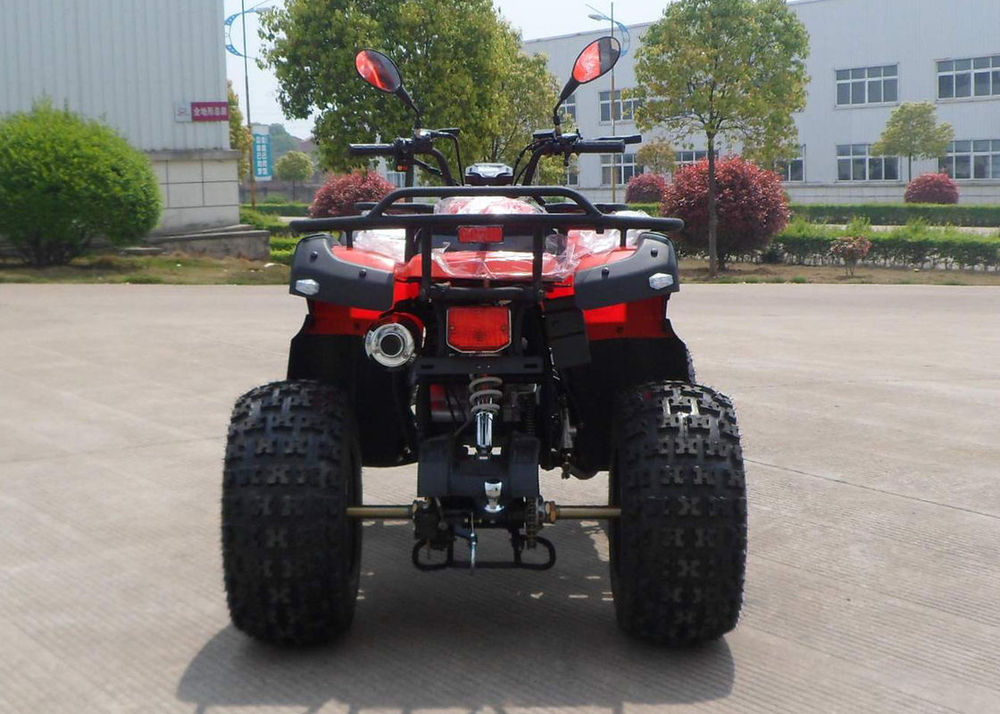 Either the night before or the day of scheduled delivery the trucking company will call you to verify that someone is available to receive the vehicle. You must be home at time of delivery, they will not leave it.
Either the night before or the day of scheduled delivery the trucking company will call you to verify that someone is available to receive the vehicle. You must be home at time of delivery, they will not leave it.
What do I do if my order is lost or damaged?
Unfortunately, lost packages and minor shipping damages may occur at times. Most damage can be corrected with a few simple replacement parts that we will ship to you immediately after claim is approved.
1. Upon arrival of your vehicle fully Inspect entire unit BEFORE signing the delivery receipt. In case of any damage presence, you must note the damages on the delivery receipt and have the driver sign in acknowledgment. (DO NOT REFUSE DELIVERY) Fax the delivery receipt to familyfunpowersports at 609-751-0374 within 3 days of delivery. Failing to do so will void the claim.
2. All noted damage must be reported to Familyfunpowersports.com via e-mail within 3 days of delivery, no exceptions.
3.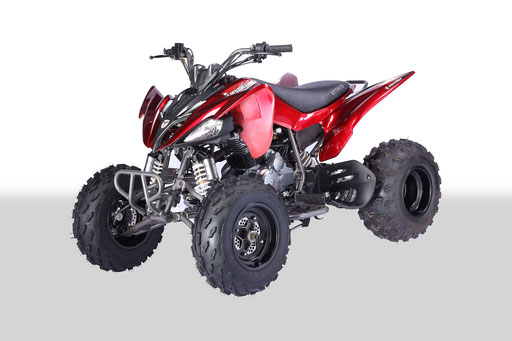 Please save original packing material for investigation by the shipping company. Please take pictures of the damaged vehicle, crate and cardboard cover and send [email protected] within 3 days of delivery, please include your order number, your name, address, phone number and tracking number.
Please save original packing material for investigation by the shipping company. Please take pictures of the damaged vehicle, crate and cardboard cover and send [email protected] within 3 days of delivery, please include your order number, your name, address, phone number and tracking number.
4. We will then file a shipping damage claim with the trucking company and the merchandise will be inspected by a one of their representatives.
5. Replacement part(s) or non-repairable vehicle warranty reimbursement will be given once we receive your complete supporting documents for the damage claim; and or the trucking company has settled and approved the claim.
Disclosure: We may get commissions for purchases made through links in this post.
Kazuma ATVs became a hit with North American consumers due to their affordable price tag, cloned engine, and safety features. While these factors are crowd-pleasers, they do not guarantee brand loyalty.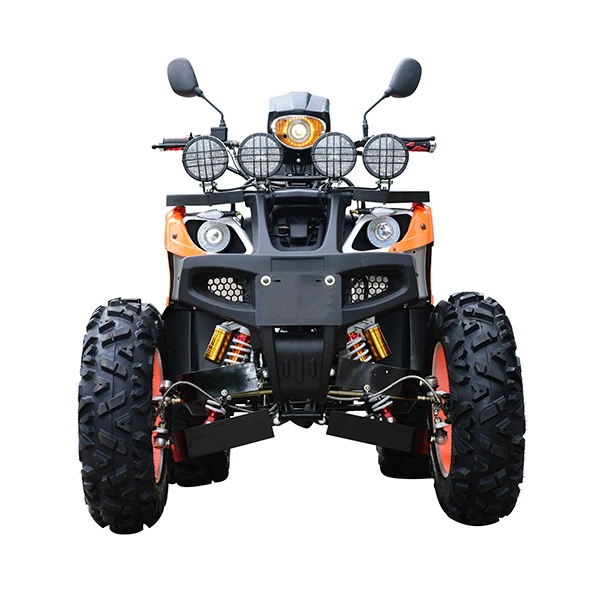 More than getting bang for their buck, customers want a highly-reliable machine – especially when the vehicle is going to be used by their kids. Did the Kazuma ATV meet this expectation with flying colors? Read on to discover.
More than getting bang for their buck, customers want a highly-reliable machine – especially when the vehicle is going to be used by their kids. Did the Kazuma ATV meet this expectation with flying colors? Read on to discover.
The Kazuma ATV is an off-brand Chinese-made youth ATV introduced in the U.S. market in 2003. Boasting safety ignition keys and cutouts, a speed governor, an electric start system, and a full suspension, the Kazuma youth ATVs are excellent off-road vehicles for kids.
For many, this no-nonsense four-wheeler is the ideal machine to teach kids how and when to switch gears without an actual clutch to pull in. But for some concerned parents, its safety features are not enough to give them peace of mind as they allow their youngsters to gain confidence on the trails. With these contrasting views, this guide can only attempt to enlighten you on this briefly-celebrated off-road vehicle.
Kazuma ATVs entered the U.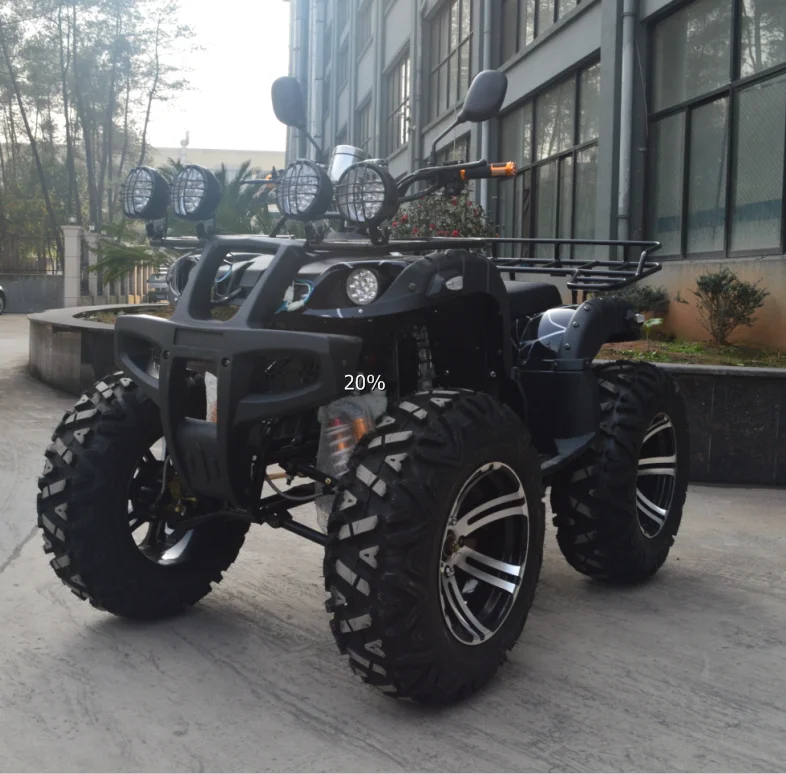 S. all-terrain vehicle scene in 2003 when it established its offshore base in Bryan, Texas. As to when the quad became a household name is somewhat obscure. But what is clear is that it created a buzz in 2012 (it was also around this time that Chinese ATVs were all the rave due to their low price point and vehicle components cloned from industry leaders like Yamaha and Honda).
S. all-terrain vehicle scene in 2003 when it established its offshore base in Bryan, Texas. As to when the quad became a household name is somewhat obscure. But what is clear is that it created a buzz in 2012 (it was also around this time that Chinese ATVs were all the rave due to their low price point and vehicle components cloned from industry leaders like Yamaha and Honda).
The product line’s primary focus was on youth ATVs – with engine displacements ranging from 50 to 250 cm3. Out of the lot, Kazuma ATV 250-cc vehicles had the most models, followed by Kazuma 110 ATVs and 150-cc quads. During its lifetime, Kazuma ATV Inc. was able to manufacture a total of eight models and 16 trims covering the abovementioned displacement range, as follows:
| Models/Displacement | Kazuma 50cc ATV (2) | Kazuma 90cc ATV (2) | Kazuma 100cc ATV (2) | Kazuma 110cc ATV (3) | Kazuma 150cc ATV (3) | Kazuma 250cc ATV (4) |
| Cougar | X | X | X | X | X | ✔ |
| Gator | X | X | X | X | X | ✔ |
| Dingo | X | X | X | X | ✔ | ✔ |
| Falcon | X | ✔ | X | ✔ | ✔ | ✔ |
| Lacoste | X | X | ✔ | ✔ | ✔ | X |
| Panda | X | ✔ | ✔ | ✔ | X | X |
| Wombat | ✔ | X | X | X | X | X |
| Meerkat | ✔ | X | X | X | X | X |
Depending on your Kazuma model of choice, the vehicle’s chassis may or may not have a semi-naked design and a full floorboard.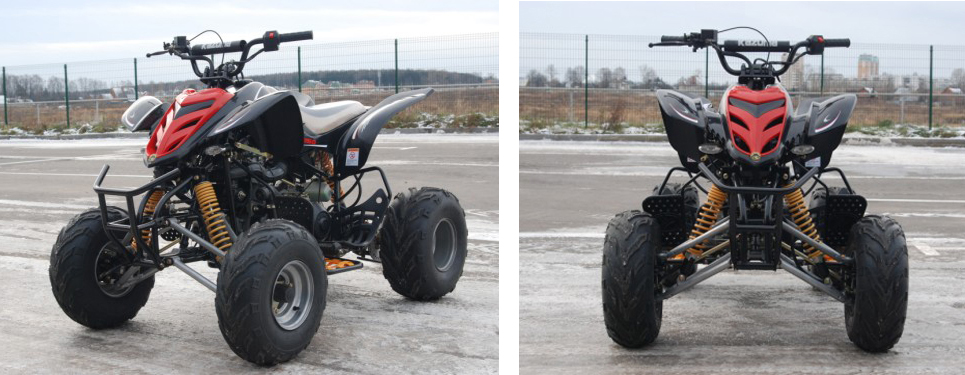 Front and rear racks are reminiscent of earlier versions of the Polaris Sportsman’s utility racks. The front bumper has a signature honeycomb grille that looks very much like that of the Mahindra off-road vehicles. The Falcon models, in particular, resemble a miniature version of the Yamaha Raptor. Front brush guards could be full or scarce, as in the case of the Panda models. Kazuma 50cc ATVs have circular or rectangular headlights, while the rest have dual low-beam lights located on the front fenders of the quad.
Front and rear racks are reminiscent of earlier versions of the Polaris Sportsman’s utility racks. The front bumper has a signature honeycomb grille that looks very much like that of the Mahindra off-road vehicles. The Falcon models, in particular, resemble a miniature version of the Yamaha Raptor. Front brush guards could be full or scarce, as in the case of the Panda models. Kazuma 50cc ATVs have circular or rectangular headlights, while the rest have dual low-beam lights located on the front fenders of the quad.
Before the manufacturer ceased production of its all-terrain vehicles, it produced two more (adult-sized) ATVs – the Jaguar 500cc and the Mammoth 800cc. Enthusiasts speculate that had these mid-sized and side-by-side machines been given enough time and R&D allocation, they would have evolved into inexpensive, quality alternatives to big-name-brand ATVs that would surely entice budget-conscious customers.
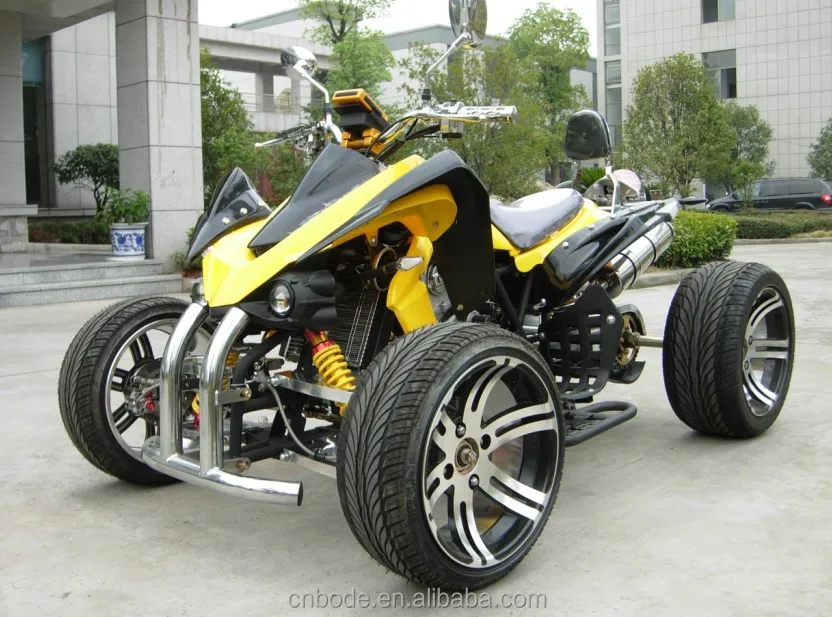 It has a bore-stroke ratio of 47 x 47.8 mm (1.85 x 1.88 inches) and an engine displacement of 106 cm3 (6.47 in3), delivered by a PZ19/PZ20 carburetor. The fuel tank capacity is 1.2 US gallons/4.5 liters and a wet-sump lubrication system. The quad requires regular gasoline with a minimum PON rating of 87+ (although unleaded with no molybdenum or additives is preferred). Maximum torque is 6.7 Nm @ 6,000 RPM, while maximum power output is 6.8 hp (5 kW) @ 8,000 RPM.
It has a bore-stroke ratio of 47 x 47.8 mm (1.85 x 1.88 inches) and an engine displacement of 106 cm3 (6.47 in3), delivered by a PZ19/PZ20 carburetor. The fuel tank capacity is 1.2 US gallons/4.5 liters and a wet-sump lubrication system. The quad requires regular gasoline with a minimum PON rating of 87+ (although unleaded with no molybdenum or additives is preferred). Maximum torque is 6.7 Nm @ 6,000 RPM, while maximum power output is 6.8 hp (5 kW) @ 8,000 RPM.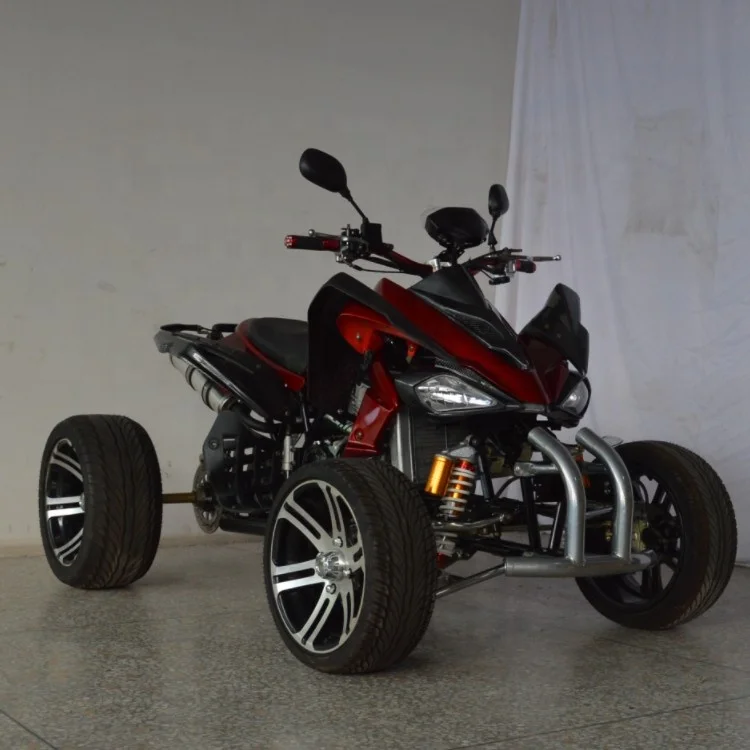
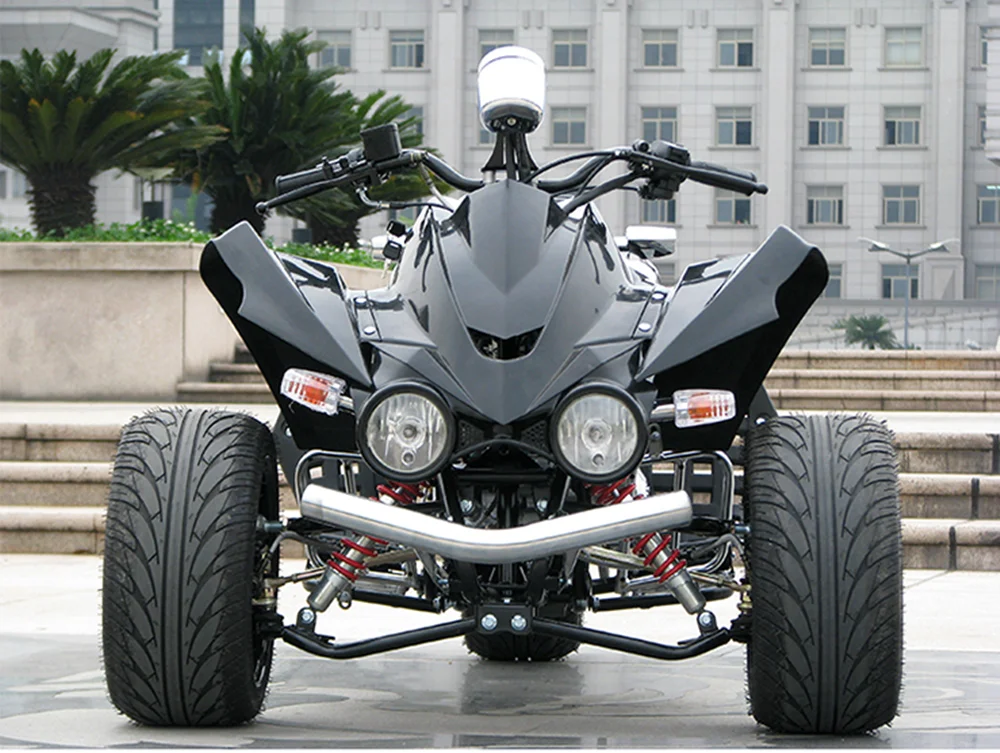 Front and rear shocks are both adjustable, but the latter does not have rebound damping.
Front and rear shocks are both adjustable, but the latter does not have rebound damping.
Because Kazuma ATV Inc. is no longer active, looking up the list price of Kazuma ATVs online can be challenging. There is also no information on either Nada Guides or Kelley Blue Book sites. Several auction sites and eBay posts list the resale value of the quad at $1,500. However, these posts are rare.
It’s safe to assume that the 500-cc Jaguar and the 800-cc Mammoth are the most expensive of the lot, followed by Kazuma ATV 250-cc quads. While secondhand Kazuma ATVs are scarce, aftermarket parts are in abundance. The price may range from $3 to over $150, depending on the vehicle component for sale. Popular sites to visit are eBay, Amazon, and AliExpress. You can also score great finds in forums, but parts’ availability is always on a “first come, first serve” basis.
In 2007, the Kazuma Meerkat 50cc was called out by CPSC due to multiple safety defects, the absence of front brakes and a parking brake, and the ability to start the ATV in gear.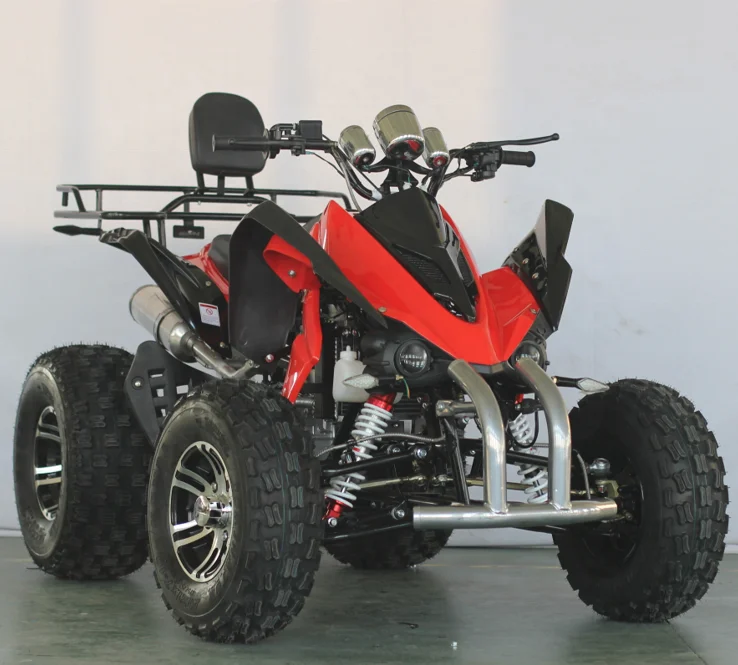 During this time, CSPC failed to reach a quorum, preventing it from issuing a product recall memorandum. The warning issued by the said regulating body and the manufacturer’s consequent response caused quite a stir, as both parties raised valid points. The company president swore to make the necessary changes to the youth ATV for post-2007 models after pointing out that most (if not all) of CPSC’s warnings are for ATVs exceeding 70 cm3.
During this time, CSPC failed to reach a quorum, preventing it from issuing a product recall memorandum. The warning issued by the said regulating body and the manufacturer’s consequent response caused quite a stir, as both parties raised valid points. The company president swore to make the necessary changes to the youth ATV for post-2007 models after pointing out that most (if not all) of CPSC’s warnings are for ATVs exceeding 70 cm3.
Owners who have complained about the quad question the integrity of its build. With only four to six months into owning the youth ATV, the quad seemed to be falling apart. Some of the things observed by unhappy customers are as follows:
Since Kazuma ATVs available today would all be pre-loved units expect to do some patching and replacing of rubber hoses in your quad.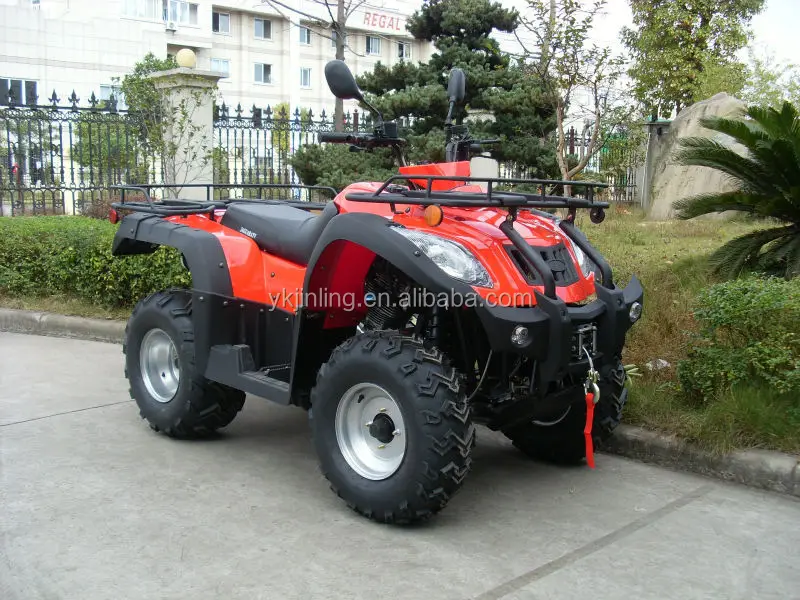 Unlike established name brands, Kazuma used flimsy rubber that easily deteriorates and tears.
Unlike established name brands, Kazuma used flimsy rubber that easily deteriorates and tears.
One of the main flaws of this kiddie four-wheeler is its narrow wheelbase. Paired with a primitive suspension and rear brake system, the wheelbase adds to the vehicle’s propensity to tip over when riding at higher speeds. Spaces can fix the problem, which drastically improves the quad’s stability by adding about three inches. However, this may not play out well with parents who would rather spend their money on protective gear.
Part of the downsides of owning a Kazuma ATV is that the vehicle currently has no parts supplier in the U.S. All parts you order will ship from China, making the waiting game tedious. HTE plastics are very difficult (if not impossible) to match up. Not to mention that you cannot physically inspect the part you are purchasing or ask for further details about it.
Teens and adult riders feel that the 100-cc quads are generally lacking torque.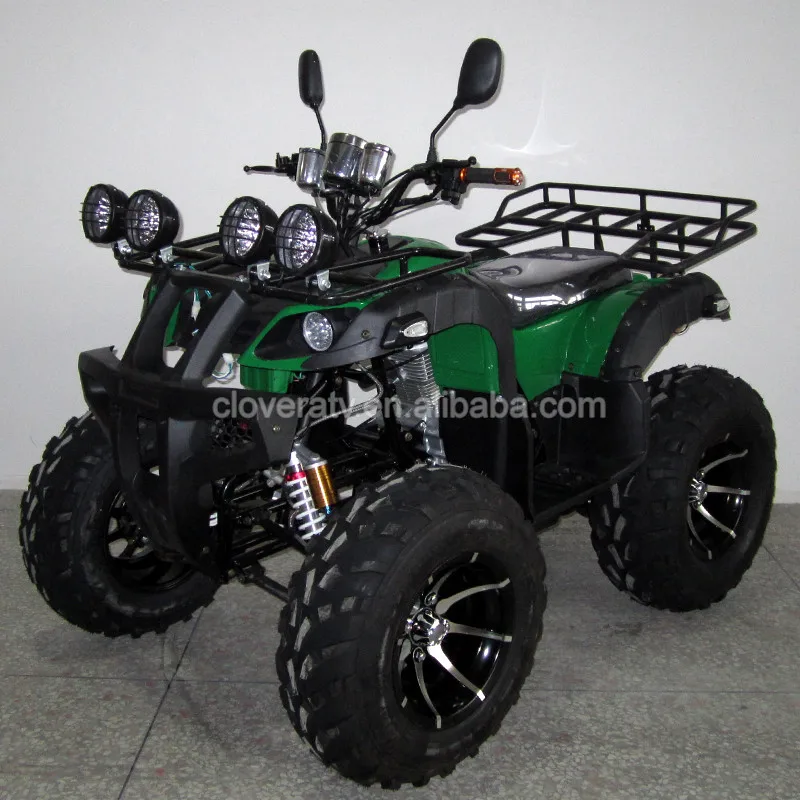 But to be fair, the vehicle was never intended for hauling heavy loads, nor was it meant to have a massive power output. Because the vehicle is for young kids who are first-time riders, its capabilities will naturally be more suited to riding on groomed trails.
But to be fair, the vehicle was never intended for hauling heavy loads, nor was it meant to have a massive power output. Because the vehicle is for young kids who are first-time riders, its capabilities will naturally be more suited to riding on groomed trails.
The ATV manufacturer does not recommend the use of the manual choke unless in colder climates. However, this is quite the reverse in real-life situations. According to Kazuma ATV owners, the vehicle is so cold-blooded that they ironically have to use the choke even on warm days. 150-cc models and up have an automatic choke, which works better than the manual one. Hence, opting for higher-displacement trims may be a wiser decision to make if you live up north.
Kazuma ATV Inc. (or Kazuma Pacific Inc.) is a Chinese manufacturer based in the U.S. The company is one of the ATV firms known for creating affordable all-terrain vehicles and is the maker of Kazuma ATVs. Kazuma ATV Inc.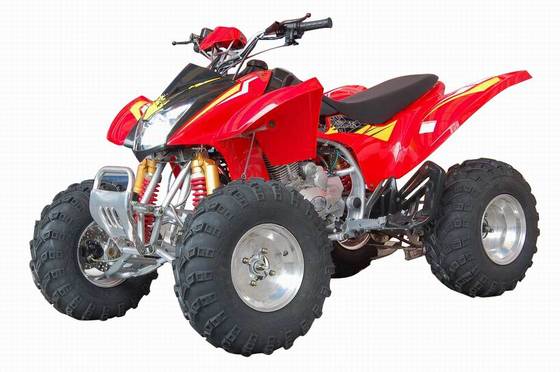 targeted parents and youth off-roaders with its lower-displacement 4x4s, which allowed kids and young adults to build confidence when on the road. During its lifetime, the Chinese company offered a wide array of trims and models that has appealed to American households and budget-conscious consumers.
targeted parents and youth off-roaders with its lower-displacement 4x4s, which allowed kids and young adults to build confidence when on the road. During its lifetime, the Chinese company offered a wide array of trims and models that has appealed to American households and budget-conscious consumers.
Like all other Chinese-made quads, Kazuma ATVs still have room for improvement. What started as a promising entry into the ATV landscape was cut short – and we can only speculate the reason behind it. Perhaps, more than the shortcomings with its features and build, what made the Kazuma ATV lineup unsuccessful was its lack of originality – clearly evident in its off-road vehicles’ design and styling. Without a distinct characteristic, the four-wheeler was lost amid the clamor of consumers and the need to keep up with bigger competition.
On the bright side, Kazuma ATVs that are still in the market today have proven to stand the test of time and criticism.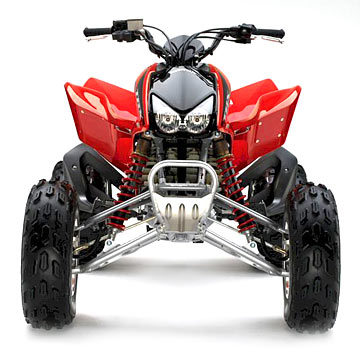 Despite the presence of its naysayers, the four-wheeler was able to gain a loyal following. The evolution of the youth ATV would have been a sight to see and experience in the middle of present-day standards. But because the manufacturer has long retired, it is now up to skilled mechanics and expert enthusiasts to bring the best out of this value kiddie quad.
Despite the presence of its naysayers, the four-wheeler was able to gain a loyal following. The evolution of the youth ATV would have been a sight to see and experience in the middle of present-day standards. But because the manufacturer has long retired, it is now up to skilled mechanics and expert enthusiasts to bring the best out of this value kiddie quad.
All ATVs have their own "term" of life. This applies even to expensive branded devices that cost tens of thousands of dollars. There is nothing to be done about the fact that key components of equipment gradually wear out and fail. But you can increase the life of the components by using quality oil. Even if you decide to buy an inexpensive ATV, you need to find the right lubricants for it. Therefore, let's figure out which oil is better to choose for an ATV.
It should be noted right away that a special oil is used for each of the units of the apparatus.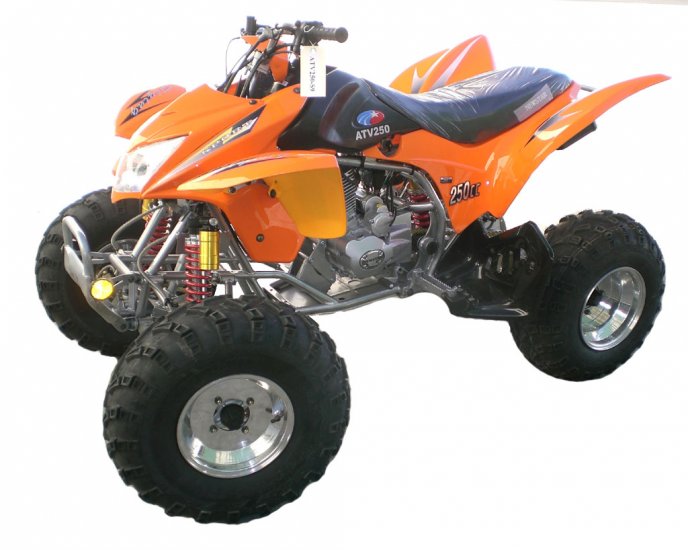 The lubricant composition is poured into:
The lubricant composition is poured into:
It is not recommended to save on oil, as it not only reduces friction, but also removes excess heat. Due to this, the mechanisms work correctly, do not overheat and “live” an order of magnitude longer.
Refer to your ATV documentation for information on lubricant formulations. Each device has its own requirements, so be sure to study them.
Although it is worth following the manufacturer's recommendations, this does not mean that you need to buy the first suitable composition. All oils consist of a base and special additives. And it is on the basis that their operational features depend. There are 3 types of oil:
 But synthetics have a fat minus - the price. Although the high operational resource of the composition partially compensates for this disadvantage.
But synthetics have a fat minus - the price. Although the high operational resource of the composition partially compensates for this disadvantage. It is up to the rider to decide which oil to put in the ATV. However, experienced motorists are advised not to save on lubricants, since repairing an engine or gearbox will cost many times more.
There are several oil characteristics that a rider should pay attention to. The first step is to determine the viscosity of the liquid.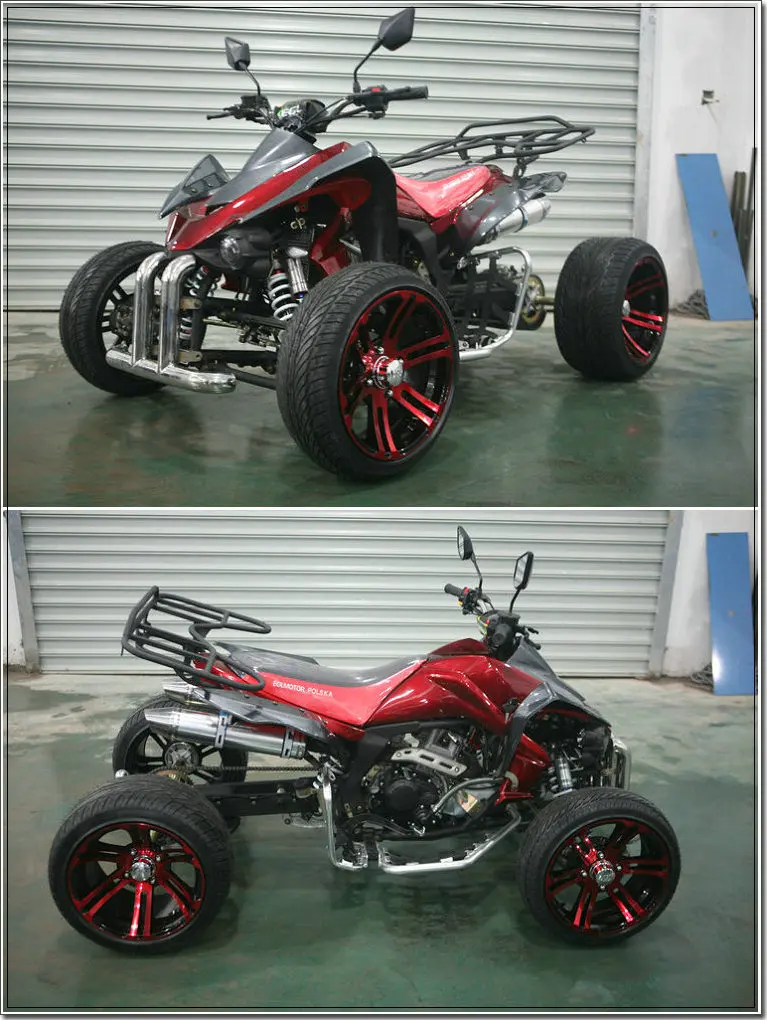 To do this, look at the label. If it has the letter W (winter), then the liquid is designed for low temperatures. The following numbers show what weather conditions the composition is intended for (0 - mild winter, 25 - severe frost).
To do this, look at the label. If it has the letter W (winter), then the liquid is designed for low temperatures. The following numbers show what weather conditions the composition is intended for (0 - mild winter, 25 - severe frost).
The situation is similar with summer liquids. There are 5 classes of compositions (by viscosity) from 20 to 60. There are also universal oils that are used both in winter and in summer. You can recognize them by special markings, for example: "20W40"
You also need to pay attention to:
The API system is used to classify oil by quality. The marking looks like this: S (common name) + A, B, C, D, etc. The lowest quality is marked with the letters "SA", and the highest quality is marked with "SL".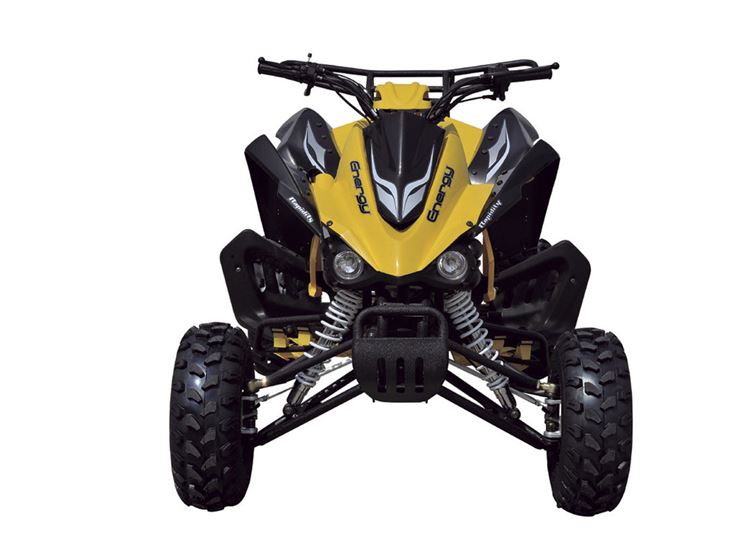
When deciding which oil to fill in an ATV engine, you need to take into account the characteristics of the vehicle itself. Because the ATV is subjected to considerable stress, the engine becomes very hot. This means that the oil must be resistant to high temperatures and conduct heat well.
Plays the role and basis of the composition. Ideally, you should use only synthetic or semi-synthetic fluid. You need to pay attention to the labeling: the country of origin, season, quality standard.
Important: For gearboxes and gearboxes, you need to use special compounds that differ from engine oil in a set of additives.
The first thing a rider needs to figure out is how often to change the oil in an ATV. Each manufacturer has its own recommendations, but experienced motorists advise filling in new fluid every 160 hours. In this case, the first replacement is performed during the break-in, after the device has worked for 20 hours.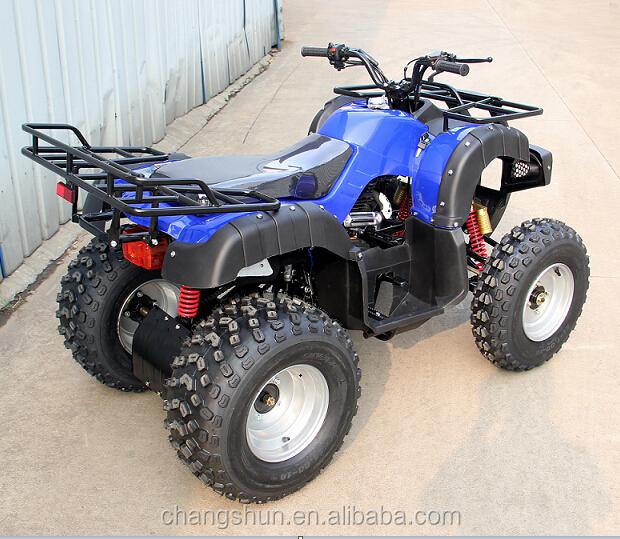
To change the oil you need:
You also need to know how to check the oil level after adding new fluid. To do this, warm up the engine, wait 10 minutes, unscrew the oil tank cap, remove and wipe the dipstick. After that, the rod is lowered into the crankcase and removed after 3-5 seconds. The oil level on the dipstick determines the fluid level.
06/16/2020 6303
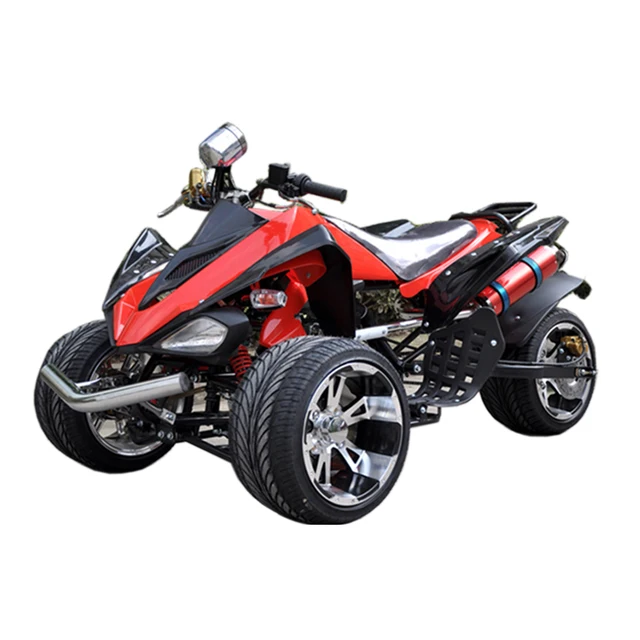
Have you seen the movie Colors?
Of course, he is not talking about different colors of engine oil and what they mean. But luckily, if you're looking for the answer to why the oil in your pitbike/ATV is milky or white, you've come to the right place.
If you want to know about a movie in which an experienced cop and his rookie partner patrol the streets of East Los Angeles and try to keep local gangs under control, then you've come to the wrong place.
For many reasons, oil can be called the blood of all gasoline and diesel cars. Pit bikes and ATVs are also no exception. If you cut yourself and the blood coming out of the wound is any color but not red, you will be frightened and call a doctor. Human blood should be red; likewise, the oil should be amber or dark brown in color. If it has a different color - depending on the color - change it or call a mechanic (you can also handle it yourself).
We hope you check your oil regularly.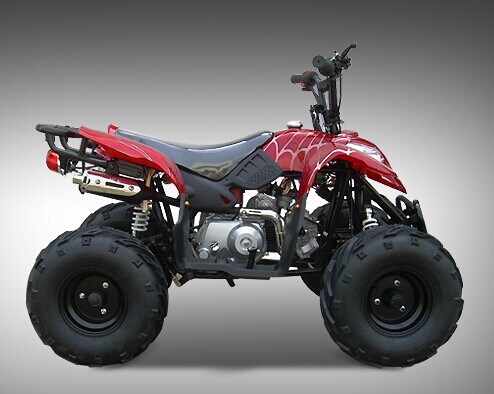 Timely replacement of engine oil and monitoring its level is a guarantee that the engine will work stably and efficiently. So the next time you check your oil and it's different from its normal amber color, you know you're in trouble.
Timely replacement of engine oil and monitoring its level is a guarantee that the engine will work stably and efficiently. So the next time you check your oil and it's different from its normal amber color, you know you're in trouble.
If the oil is black, then it is doing its job well. The oil absorbs contaminants, preventing engine damage and premature wear. The black tint of the oil indicates that it contains impurities, has lost its viscosity and needs to be replaced. Be aware that on some bikes, even after one ride, the oil turns from dark brown to black. It is important to know your bike well in order to avoid frequent oil changes and reduce operating costs.
But if the oil has exceeded the maximum hours recommended by the manufacturer, and at the same time is black as night, change the oil and oil filter.
The milky color of the butter is a cause for concern. Milky butter is somewhat similar to coffee with cream.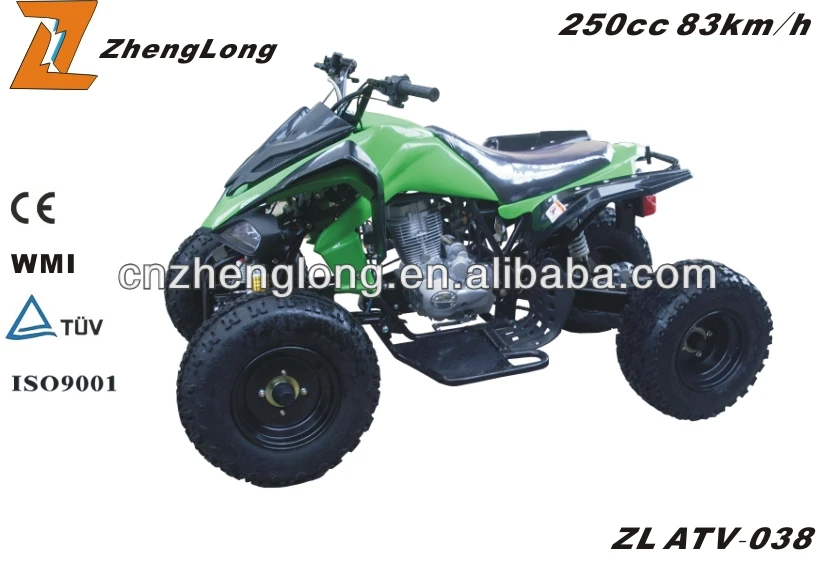 Sometimes it's even frothy, like a milkshake. A milky shade of oil indicates the ingress of coolant into the lubrication system or the accumulation of condensate. Most likely, the problem arose due to antifreeze; and since antifreeze, like oil, is based on hydrocarbons, they mix well.
Sometimes it's even frothy, like a milkshake. A milky shade of oil indicates the ingress of coolant into the lubrication system or the accumulation of condensate. Most likely, the problem arose due to antifreeze; and since antifreeze, like oil, is based on hydrocarbons, they mix well.
Coolant and engine oil chemically strive for stability. For example, a damaged cylinder head allows coolant to leak from the cooling jacket into the combustion chamber. Also, a crack in the "water jacket" can cause antifreeze to enter the engine. In addition, a failed water pump makes it possible for the two fluids to mix.
If it's not the antifreeze, and you've also checked the radiator and other possible leaks, then someone deliberately wants to ruin your trip and pours water right into the engine. Perhaps not, it also happens that moisture has accumulated in an ATV or pit bike due to violation of conditions during long-term storage. Condensation collects at the bottom and oil stays at the top, and when you start your bike, the mixture of water and oil gives off a milky finish.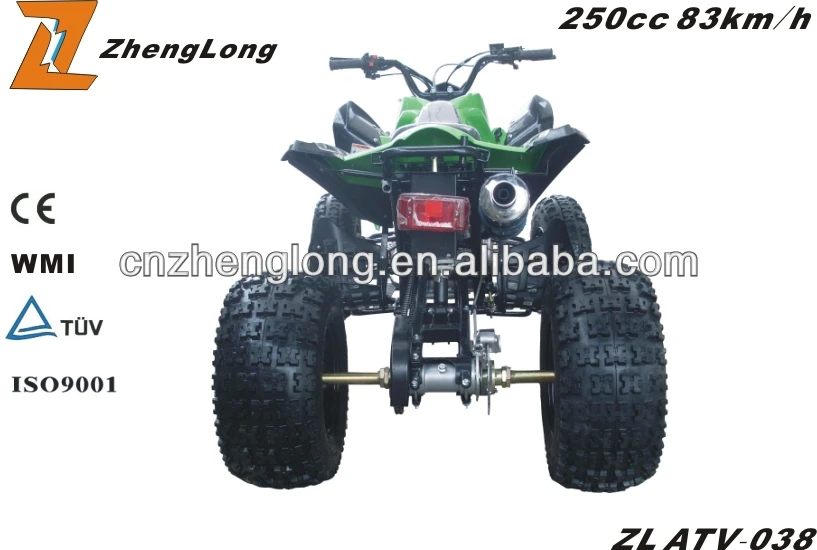
In some cases, the milky butter has the consistency of lard in jelly, which means that either you found your own barn, or completely ignored the necessary maintenance of your equipment and abandoned it for a very long time, or never changed the oil for 80,000 kilometers.
If the oil has a silver tint, that is, it looks like the liquid metal body of the T-1000 robot from the second Terminator, then you are in really big trouble and they are not related to the fact that the oil is magically extracted from the engine and transformed into a metal dagger. If you see the golden color of the oil, you also, unfortunately, have not found a gold mine.
When you start a new motocross bike or ATV, it is best to change the oil and filter after the first test ride, as it contains small metal chips. Even in good engines, metal chips are present in small amounts, and this is one of the reasons why you should change both the oil and the filter regularly.